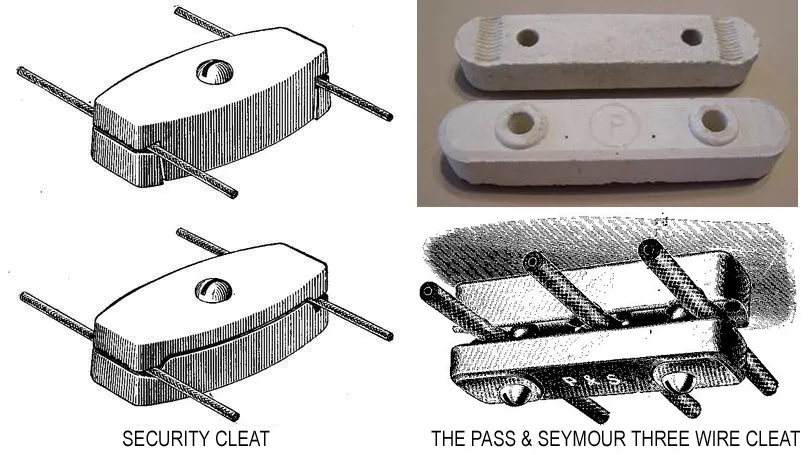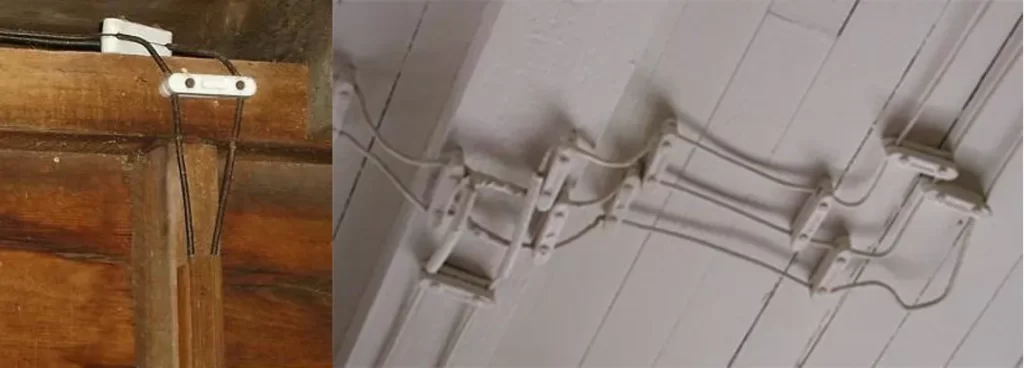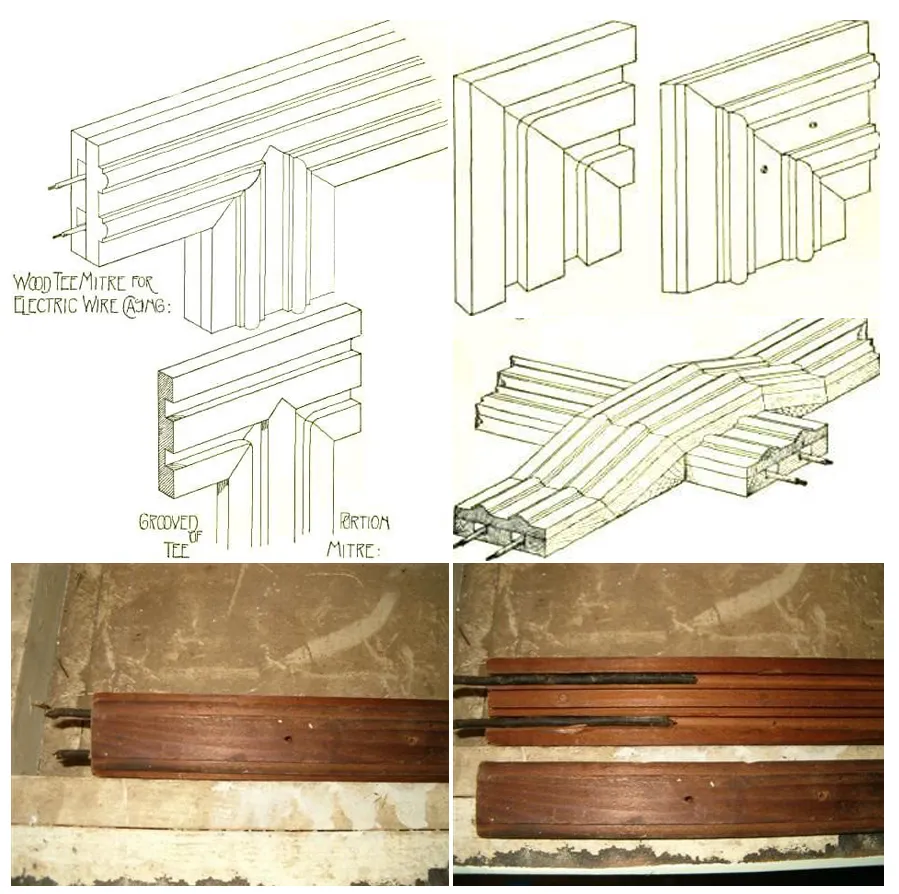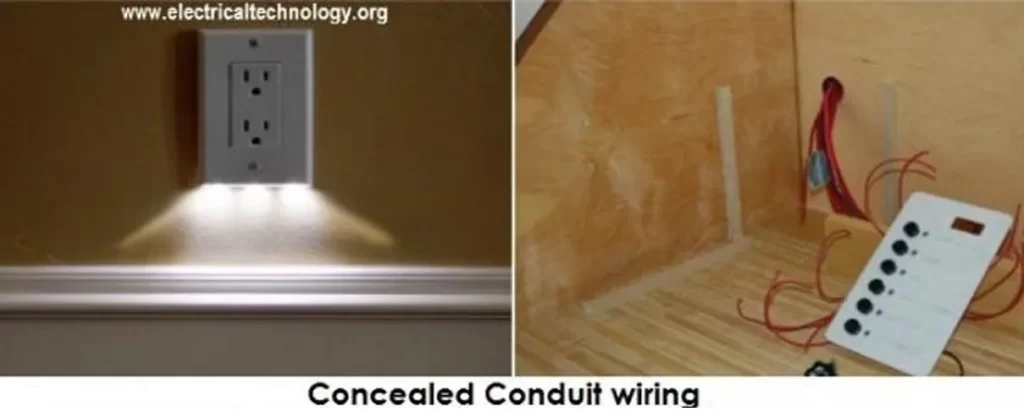If you want to know about the planning of electrical installation or electrical distribution system or introduction of electricity production, please click the link.
A system of wiring refers to the arrangement and distribution of electrical wiring in a building or structure. The purpose of a wiring system is to provide a safe and efficient means of transmitting electrical power from the source to the various appliances and equipment throughout the building.
1) Cleat Wiring
- In this type of wiring, insulated conductors are supported on porcelain or wooden cleats normally used for temporary work.
Advantages

- Easy installation.
- Materials can be retrieved for reuse.
- Flexibility provided for inspection, modifications and expansion as the cables and wires of cleat wiring system is in open air.
- Relatively economical.
- Skilled manpower not required.
- cheapest method of wiring.
Disadvantages

- Cleat wiring can’t be use for permanent use because, Sag may be occur after sometime of the usage.
- In this wiring system, the cables and wiring are in open air, therefore, oil, Steam, humidity, smoke, rain, chemical and acidic effect may damage the cables and wires.
- It is not lasting wire system because of the weather effect risk of fire and wear tear.
- It can be only used on 250 440 Volts on low temperature.
- There is always a risk of fire and electric shock.
- it can’t be used in important and sensitive location and places.
- It is not lasting, reliable and sustainable wiring system.
2) Casing Capping Wiring
- It consists of insulated conductors laid inside rectangular, teakwood boxes having grooves inside it or in PVC casing
- The system is suitable for indoor and domestic installations.

Advantages
- Cheaper than conduit wiring.
- Provides good isolation as the conductors are placed apart reducing the risk of short circuit.
- Easily accessible for inspection and repairs.
- Since the wires are not exposed to atmosphere, insulation is less affected by dust, dirt and climatic variations.
- No risk of electric shock due to covered wires and cables in casing capping.
Disadvantages
- Highly inflammable.
- Not suitable in the acidic, alkalies and humidity conditions.
- Usage of unseasoned wood gets damaged by termites.
- Skilled workmanship required.

3) Batten Wiring (CTS or TRS)

- The cables are run on well-seasoned and straight teak wood batten with at least a thickness of 10 mm The cables are held on the wooden batten by means of tinned brass link clips (buckle clip) already fixed on the batten with brass pins and spaced at an interval of 10 cm for horizontal runs and 15 cm for vertical runs.
Advantages of Batten Wiring
- Wiring installation is simple and easy cheap as compared to other electrical wiring systems
- Paraphrase is good and beautiful if laid properly
- Repairing is easy
- Customization can be easily done in this wiring system
Disadvantages of Batten Wiring
- Can’t be install in the humidity, Chemical effects, open and outdoor areas.
- High risk of firs.
- Not safe from external wear tear and weather effects because, the wires are openly visible to heat, dust, steam and smoke.
- Heavy wires can’t be used in batten wiring system.
- Only suitable below then 250 V.
- Need more cables and wires.
4) Conduit Wiring
There are two additional types of conduits wiring according to pipe installation
- Surface Conduit Wiring PVC conduit
- Concealed Conduit Wiring Metal conduit
i) Surface Conduit Wiring

If conduits installed on roof or wall, it is known as surface conduit wiring. in this wiring method, they make holes on the surface of wall on equal distances and conduit is installed then with the help of Rawal plugs.
ii) Concealed Conduit wiring

- If the conduits are hidden inside the wall slots with the help of plastering, it is called concealed conduit wiring in other words, the electrical wiring system inside wall, roof or floor with the help of plastic or metallic piping is called concealed conduit wiring obliviously, it is the most popular, beautiful, stronger and common electrical wiring system nowadays

Advantage of Conduit Wiring Systems
- It is the safest wiring system (Concealed conduit wring).
- Appearance is very beautiful (in case of concealed conduit wiring).
- No risk of mechanical wear tear and fire in case of metallic pipes.
- Repairing and maintenance is easy.
- There is no risk of damage the cables insulation.
- it is safe from corrosion (in case of PVC conduit).
- It can be used even in humidity chemical effect and smoky areas No risk of electric shock (In case of proper earthing and grounding of metallic pipes).
- It is reliable and popular wiring system.
- Long lasting wiring system.
Disadvantages of Conduit Wiring Systems
- It is expensive wiring system (Due to PVC and Metallic pipes, Additional earthing for metallic pipes Tee(s) and elbows etc.
- Very hard to find the defects in the wiring.
- installation is not easy and simple.
- Risk of Electric shock (In case of metallic pipes without proper earthing system).
- Very complicated to manage additional connection in the future.

6) Factors to be considered during choosing type of wiring
- Durability
- Safety
- Appearance
- Cost
- Accessibility
- Maintenance Cost
7) Faults in a circuit
Overcurrent
Any current in excess of the rated current of equipment or the amperage of a conductor It may result from overload, short circuit, or ground fault
Overload
Operation of equipment in excess of normal, full load rating, when it persists for a sufficient length of time, would cause damage or dangerous overheating.
Ground fault
An unintentional, electrically conducting connection between an ungrounded conductor of an electrical circuit and the normally non-current carrying conductors, metallic enclosures, metallic raceways, metallic equipment, human body or earth.
Short circuit
short circuit is unintentional contact between 2 ungrounded conductors or an ungrounded conductor and a grounded conductor.
Regardless of the type of wiring system used, it is important to follow proper safety guidelines and have the system installed and maintained by a licensed electrician.